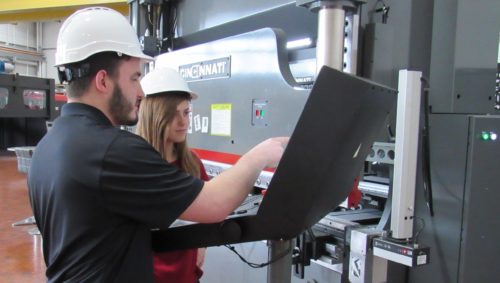Real-time control systems to benefit from no-charge data distribution service (DDS) middleware
Qualifying projects can get Real-Time Innovations' implementation of the Object Management Group's DDS software and free training. See photo.
Sunnyvale, CA – Real-Time Innovations announced that its implementation of the Object Management Group’s Data Distribution Service (DDS) standard, RTI Data Distribution Service, will be available for no charge to most independent research and development, small business innovation research (SBIR), and university projects. Developers interested in DDS who do not qualify for RTI’s no-cost licenses can take advantage of a new 30-day trial download of RTI Data Distribution Service, an accompanying tutorial, RTI’s public knowledge base, and DDS workshops.
“Hundreds of projects already use RTI’s DDS implementation to build distributed real-time applications,” said Dr. Stan Schneider, RTI CEO. “Many more could benefit from the power of DDS, but have not had the time or money to invest in learning the technology. With these new free and low-cost educational resources, RTI is making DDS much easier to obtain and learn. This makes DDS technology accessible to many projects that cannot acquire commercial software or accept the effort and risk inherent in using immature or unsupported open-source options.”
No-cost research licenses to RTI Data Distribution Service are available for the Microsoft Windows and Linux platforms. Application programming interfaces support C, C++, Java and .NET (C# and C++/CLI). RTI plans to introduce the benefits of DDS and RTI’s new no-cost licenses at the end of March.
For projects that qualify, the no-cost licenses come with a free online support system. Resources include:
A bundled tutorial that walks developers through the process of creating DDS applications and taking advantage of DDS features such as data-centric publish-subscribe communication and real-time Quality of Service control (QoS).
A free public knowledge base contains nearly 100 examples, tips and other articles on the use of DDS and RTI Data Distribution Service. Low-cost, hands-on training through public DDS Workshops are scheduled throughout the U.S.
For a fee, additional support is also available. A fixed cost of $9,300 per year for up to three developers gets users phone and email support, and access to a more extensive knowledge base.
Standardized by the Object Management Group (OMG), DDS defines the mechanisms, programming interfaces and protocols that distributed applications use to communicate with each other. DDS was designed specifically to meet the performance and QoS requirements of real-time and embedded systems. As a result, it has been widely adopted for time-critical and mission-critical applications including Supervisory Control and Data Acquisition (SCADA) systems and industrial control.
RTI Data Distribution Service simplifies complex network programming by implementing a publish-subscribe model for sending and receiving data, events, and commands among the nodes. Use of DDS can reduce the software lifecycle costs and risk associated with systems maintained over many years. With DDS, individual subsystems can be added or upgraded without affecting other software. DDS applications are also interoperable across disparate operating systems, processor architectures and programming languages.
Examples of industrial and machine control applications of RTI DDS include:
Varian is using RTI’s middleware used to connect sensors, user display systems and control computers within its nuclear magnetic resonance (NMR) spectrometer and magnetic resonance imaging (MRI) product lines.
RTI and Schneider Electric partnering to provide the RTPS on-the-wire protocol specification to the automation industry as an open, standard control protocol. Schneider deploys RTI Data Distribution Service as its Global Data solution in its high-end Quantum and Premium PLCs .
The Max Planck Institute for Plasma Physics (IPP) building
control system
for its Tokamak nuclear fusion device.
– Edited by Renee Robbins , senior editor Control Engineering News Desk Register here to select your choice of eNewsletters free .
Do you have experience and expertise with the topics mentioned in this content? You should consider contributing to our CFE Media editorial team and getting the recognition you and your company deserve. Clickhereto start this process.






